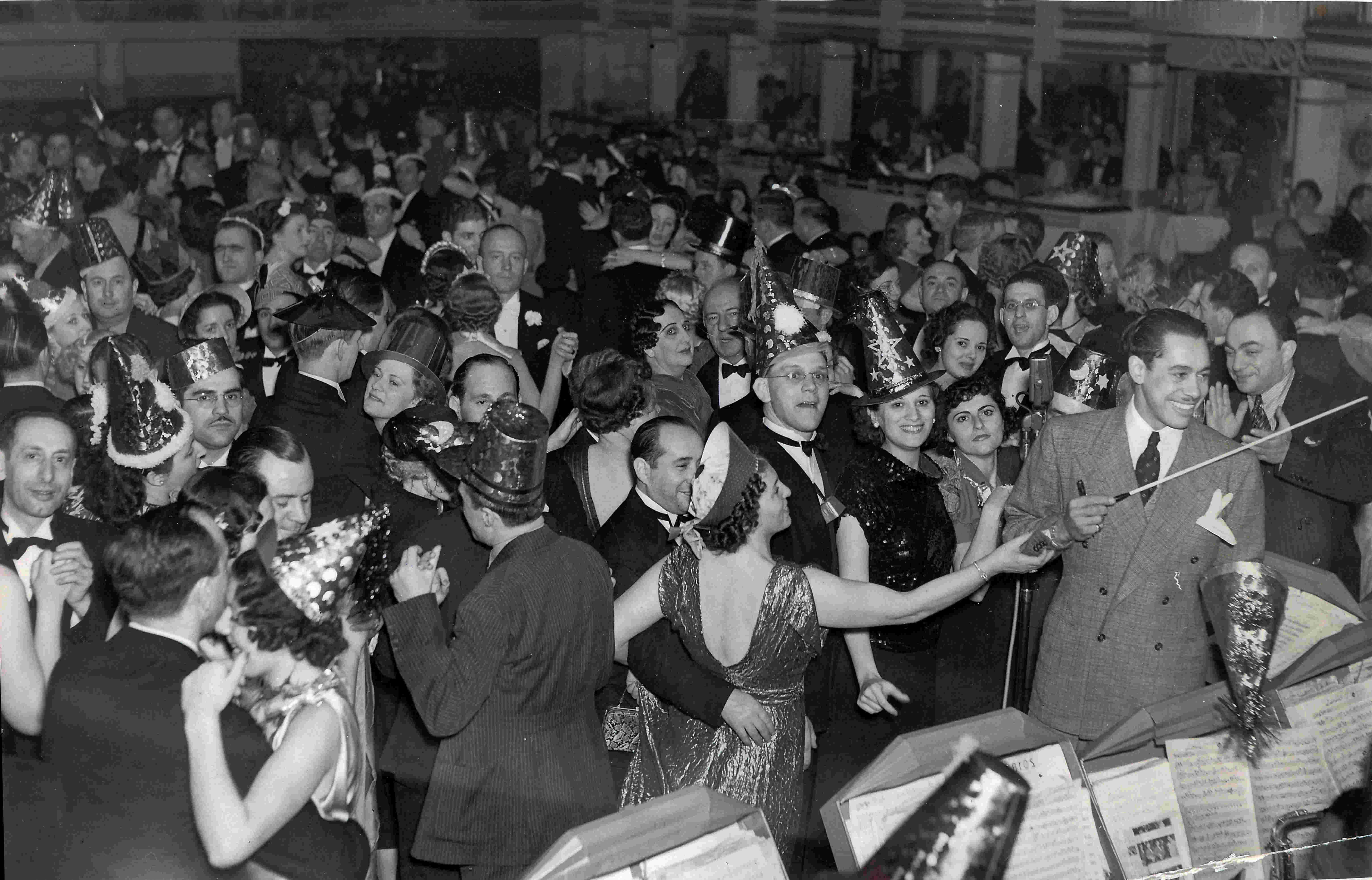It takes a collector’s serendipity to find a clue about a movie nobody ever saw. When opening a program dated with pencil by the original owner “November 14, 1947,” we found at the penultimate page a mysterious photo with a tagline: “A scene from ‘DON’T BE A JOE’” After years of unsuccessful research to see this film and a last-minute discovery by jazz film specialist Mark Cantor, we have decided to share what little we know about it -- which is quite a bit considering the total absence of information in all the usual sources. Plus some of our speculations are included for context. Read the full story →
Lockwood Lewis is associated with Cab Calloway’s rising fame at the moment the latter took over the baton of the Missourians after a famous (and supposedly) battle of bands at the Savoy in 1930. This event has overshadowed Lockwood Lewis’ long career that spanned from an admired teacher, to one of the Harlem’s favorites and a respected Union man and circus bandleader. Meanwhile, he was one of the Black Devils during World War One. What a life. What a forgotten artist! Not anymore, thanks to The Hi De Ho Blog. Read the full story →
Leroy Maxey, Part 2 Read the full story →
Part 4: The renaissance years Read the full story →
Part 3: The Fifties and the last tentatives Read the full story →
Part 2: The Forties, from stardom to decline Read the full story →
The Apollo Theater in Harlem is a milestone in the showbusiness’ landscape. Not only for jazz but also for soul, pop, rock, rap, comedy, dance and amateur performances. This venue who has revealed to the world artists like Ella Fitzgerald, James Brown thank to its famous Wednesday Amateurs’ Night, has welcomed thousands of performers, vaudeville acts, Black or white. And among them, Cab Calloway. Thanks to the considerable surviving archives, the many photos, press ads and testimonies (by other performers, reviewers, members of the audience), The Hi De Ho Blog proudly presents the very first history and survey of the 26 week-engagements (plus the many benefits evenings, and other events) when “Hi De Ho” resonated in the 125th Street’s temple of music. Part 1: The Thirties, when the Cotton Club star comes to real Harlem Read the full story →
Mae Diggs was a singer, dancer, drummer, bandleader, composer and producer. She sang popular songs of the day, sultry blues numbers, and her own compositions. She danced, usually solo on stage, with sexy, exotic moves dressed in a variety of costumes including a collection of evening gowns. She played the drums. She produced entire night club productions and occasionally conducted jazz bands and, for over twenty years, fronted a Rhythm & Blues combo. This is her story of resilience and reinvention. Read the full story →
Is there a curse for the Cab Calloway’s musicians from the rhythm section? Like Cab’s first pianist, Earres Prince with Benny Payne, like guitar player Morris White with Danny Barker, like Al Morgan with bass player Milt Hinton, drummer Leroy Maxey remains in the shadow of his successor Cozy Cole. And yet, Leroy ‘Cash’ Maxey had long been the drummer of the Missourians when Cab took over as leader of the band. Jazz historians have since recognized him as a classic drummer, notable for his use of the bass drum pedal and his four-to-the-floor technique. The Hi de Ho Blog will tell you what we know about the man who was a small star in his time, a great seducer (almost a bigamist) who was fired overnight by Cab because he couldn’t play an up-to-date solo... + Vintage drummers specialist Nicholas D. Ball offers deep research on Maxey’s playing and drum kit. A must-read! Read the full story →
Is there a curse for the Cab Calloway’s musicians from the rhythm section? Like Cab’s first pianist, Earres Prince with Benny Payne, like guitar player Morris White with Danny Barker, like Al Morgan with bass player Milt Hinton, drummer Leroy Maxey remains in the shadow of his successor Cozy Cole. And yet, Leroy ‘Cash’ Maxey had long been the drummer of the Missourians when Cab took over as leader of the band. Jazz historians have since recognized him as a classic drummer, notable for his use of the bass drum pedal and his four-to-the-floor technique. The Hi de Ho Blog will tell you what we know about the man who was a small star in his time, a great seducer (almost a bigamist) who was fired overnight by Cab because he couldn’t play an up-to-date solo... + Vintage drummers specialist Nicholas D. Ball offers deep research on Maxey’s playing and drum kit. A must-read! Read the full story →

